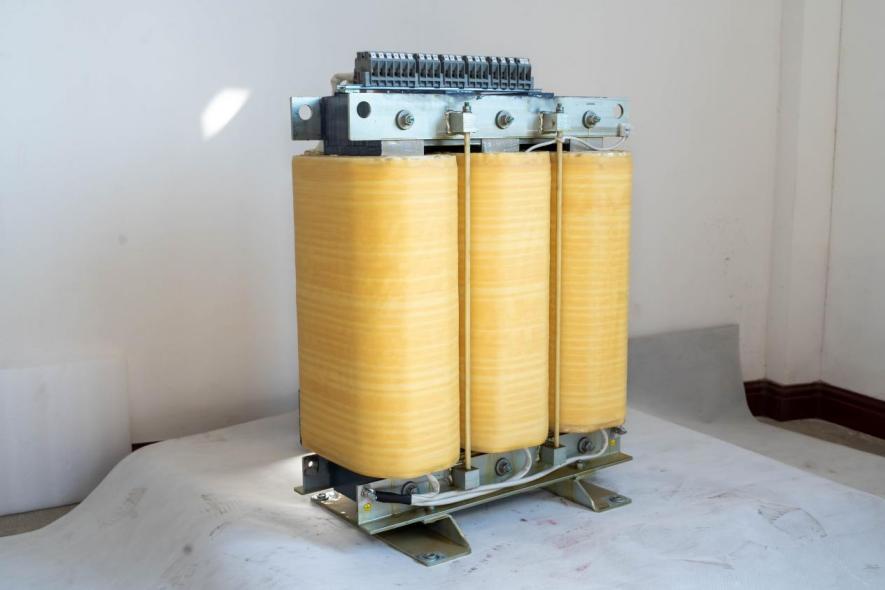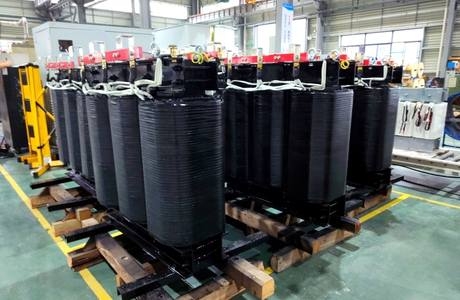Explore the critical factors influencing the selection and sizing of control power transformers, ensuring compatibility and efficiency in various industrial applications. Delve into the world of control power transformers with Shinenergy’s comprehensive blog.
Introduction to Control Power Transformers
Control power transformers are indispensable components in electrical systems, serving a critical role in providing power to control devices. This section will delve into the definition and purpose of control power transformers, their basic principles of operation, and their significance in electrical control circuits.
1.1 Definition and Purpose of Control Power Transformers
Control power transformers are specialized transformers designed to step down voltage levels from the main power supply to power control devices such as relays, contactors, and solenoids. They ensure the proper functioning of control circuits by supplying them with stable and isolated power. By isolating control circuits from the main power source, control power transformers protect sensitive control components from voltage fluctuations and electrical disturbances, thus enhancing the safety and reliability of electrical systems.
1.2 Basic Principles of Operation
At the heart of control power transformers lies the principle of electromagnetic induction. When alternating current flows through the primary winding of the transformer, it generates a magnetic field that induces a voltage in the secondary winding. By varying the number of turns in the windings, control power transformers can step up or down the voltage levels according to the requirements of the control circuit. This ability to transform voltage levels is essential for adapting power supply to the specific needs of control devices.
1.3 Importance in Electrical Control Circuits
Control power transformers are vital components in electrical control circuits, providing the necessary power to control devices that regulate the operation of machinery and equipment. Without control power transformers, control circuits would be vulnerable to power surges and fluctuations from the main power supply, leading to malfunctions and potential damage to equipment. By ensuring a stable and isolated power supply, control power transformers play a crucial role in maintaining the integrity and efficiency of electrical control systems.

Design and Construction of Control Power Transformers
This section will provide an overview of the components and materials used in the construction of control power transformers, discuss different types of winding configurations, and explore the factors influencing design choices.
2.1 Overview of Components and Materials Used
Control power transformers are typically constructed using high-quality materials such as laminated silicon steel cores and Class H insulation. These materials provide durability and reliability, allowing control power transformers to withstand the demands of industrial applications. Components such as the core, windings, and terminals are carefully designed and assembled to ensure optimal performance and efficiency.
2.2 Different Types of Winding Configurations
Control power transformers can be designed with various winding configurations to meet specific voltage and current requirements. Common configurations include single-phase and three-phase transformers, each suitable for different applications. Single-phase transformers are used in smaller control circuits, while three-phase transformers are employed in larger industrial systems with higher power demands. Manufacturers like Shinenergy offer a wide range of control power transformers with customizable winding configurations to accommodate diverse needs.
2.3 Factors Influencing Design Choices
When designing control power transformers, several factors must be considered to ensure optimal performance and reliability. These factors include the power rating, voltage transformation ratio, frequency, and ambient temperature conditions. Additionally, factors such as space constraints, efficiency requirements, and compliance with industry standards play a crucial role in determining the design specifications. By carefully analyzing these factors, manufacturers can tailor their transformers to meet the specific needs of their customers.
Applications of Control Power Transformers
This section will explore the various industries that utilize control power transformers, provide examples of their applications in different systems, and highlight the benefits of using control power transformers in electrical systems.
3.1 Use in Various Industries
Control power transformers find applications across a wide range of industries, including manufacturing, automation, telecommunications, and HVAC systems. These transformers are essential for powering control devices in motor control centers, PLC panels, relay logic circuits, and distribution substations. In manufacturing facilities, control power transformers are used to control conveyor systems, robotic arms, and production machinery, ensuring precise operation and efficient workflow.

3.2 Examples of Control Power Transformer Applications
In automation systems, control power transformers play a vital role in controlling the operation of actuators, valves, and sensors in industrial processes. In telecommunications networks, these transformers provide power to control circuits in signal processing equipment, amplifiers, and switching stations. Control power transformers are also used in building automation systems to regulate lighting, heating, and ventilation systems, improving energy efficiency and occupant comfort.
3.3 Benefits of Using Control Power Transformers in Electrical Systems
The use of control power transformers offers several benefits in electrical systems, including increased reliability, improved safety, and enhanced efficiency. By isolating control circuits from the main power supply, these transformers protect sensitive control devices from voltage fluctuations and electrical disturbances, reducing the risk of equipment damage and downtime. Additionally, control power transformers help improve system efficiency by providing a stable power supply to control devices, optimizing energy usage, and reducing operating costs.
Selection and Sizing of Control Power Transformers
Selecting and sizing control power transformers is a crucial step in ensuring the efficient and reliable operation of electrical control circuits. This section will explore the factors to consider when selecting a control power transformer, sizing guidelines based on load requirements, and ensuring compatibility with control devices and circuits.
4.1 Factors to Consider When Selecting a Control Power Transformer
When selecting a control power transformer, several factors must be taken into account to ensure optimal performance. These factors include the power rating, voltage and current requirements, frequency, ambient temperature conditions, and space constraints. It’s essential to choose a transformer that can handle the maximum load and provide the necessary voltage levels for the control devices. Additionally, factors such as efficiency, reliability, and compliance with industry standards should also be considered.
4.2 Sizing Guidelines Based on Load Requirements
Sizing control power transformers involves determining the appropriate power rating and voltage transformation ratio based on the load requirements of the control circuit. This typically involves calculating the total power consumption of the control devices and selecting a transformer with a sufficient power rating to handle the load. Additionally, the voltage transformation ratio should be chosen to provide the required voltage levels to the control devices, taking into account any voltage drops or losses in the circuit.
4.3 Ensuring Compatibility with Control Devices and Circuits
Compatibility with control devices and circuits is essential to ensure seamless integration and operation. Control power transformers should be compatible with the voltage and frequency requirements of the control devices, as well as the wiring and connection configurations of the control circuit. It’s crucial to verify that the transformer can provide the necessary power and voltage levels without causing voltage fluctuations or electrical disturbances that could affect the performance of the control devices.
Advancements and Future Trends in Control Power Transformers
As technology continues to evolve, control power transformers are also advancing to meet the changing needs of electrical infrastructure. This section will explore emerging technologies and innovations in control power transformer design, integration with smart grids and IoT systems, and predictions for the future role of control power transformers in electrical infrastructure.
5.1 Emerging Technologies and Innovations in Control Power Transformer Design
Advancements in materials, manufacturing processes, and design techniques are driving innovation in control power transformer technology. This includes the development of more efficient and compact transformers with improved performance and reliability. Advanced materials such as amorphous metals and nanocrystalline alloys are being used to reduce losses and increase efficiency, while innovative cooling techniques such as liquid cooling and forced air cooling are improving thermal management.

5.2 Integration of Control Power Transformers with Smart Grids and IoT Systems
Control power transformers are increasingly being integrated into smart grids and IoT systems to enhance monitoring, control, and optimization of electrical infrastructure. Smart transformers equipped with sensors and communication capabilities allow for real-time monitoring of key parameters such as temperature, voltage, and load status. This data can be transmitted to central control systems for analysis and optimization, enabling predictive maintenance, fault detection, and dynamic load management.
5.3 Predictions for the Future Role of Control Power Transformers in Electrical Infrastructure
Looking ahead, control power transformers are expected to play an increasingly critical role in the future of electrical infrastructure. As the demand for reliable and efficient power distribution continues to grow, control power transformers will be essential for ensuring the stability and resilience of electrical grids. Advances in technology such as renewable energy integration, energy storage systems, and electric vehicle charging infrastructure will drive the need for innovative control power transformer solutions that can adapt to evolving requirements and support the transition to a more sustainable energy future.
Conclusion
In conclusion, control power transformers play a vital role in ensuring the reliable and efficient operation of electrical control circuits in various industries. With their robust design, precise engineering, and customizable configurations, control power transformers manufactured by companies like Shinenergy offer reliable performance and superior quality, meeting the diverse needs of customers in the global market.

